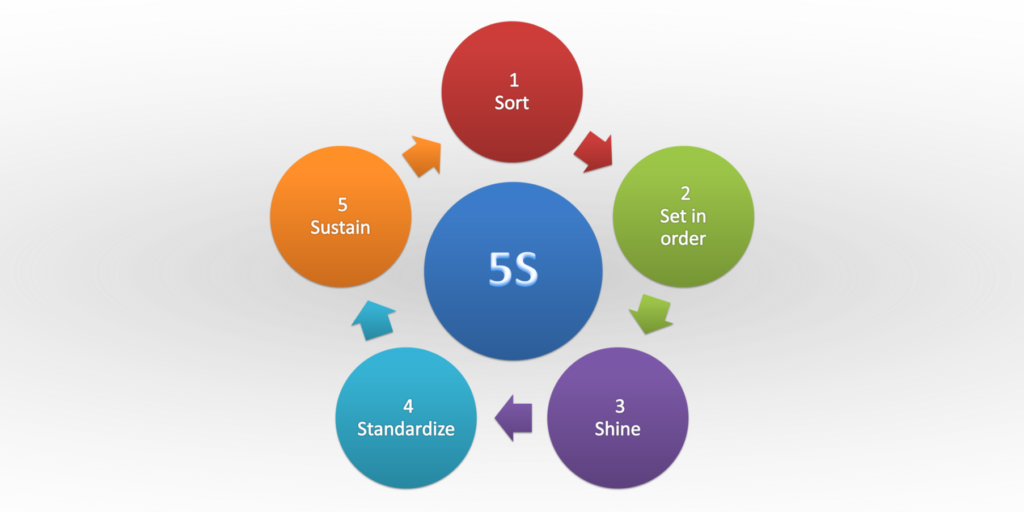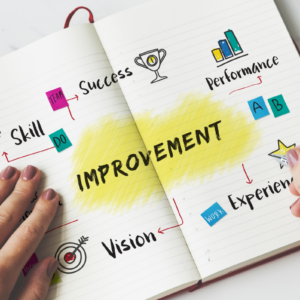
Understanding the 5S Principles
In the realm of business, particularly in the manufacturing sector, the 5S methodology is recognized as a powerful tool for improving efficiency, productivity, and overall organizational effectiveness. Originating from Japan, the 5S principles are deeply ingrained in the philosophy of lean manufacturing. The term “5S” stands for five Japanese words – Seiri (Sort), Seiton (Set in order), Seiso (Shine), Seiketsu (Standardize), and Shitsuke (Sustain). These principles, when implemented systematically, can bring about significant positive changes in the workplace, fostering a culture of continuous improvement.
1. Seiri (Sort): The Foundation of Orderliness
The first step in the 5S methodology involves sorting through items in the workplace and eliminating unnecessary elements. In the context of MSMEs, this means identifying and removing excess inventory, obsolete equipment, and anything that does not contribute directly to the production process. This decluttering creates a more organized and efficient workspace.
2. Seiton (Set in Order): Systematic Arrangement
Once unnecessary items are removed, the next step is to organize the remaining resources in a logical and efficient manner. This includes defining specific locations for tools, equipment, and materials, ensuring that everything has a designated place. This principle aims to minimize time wasted searching for items, reducing delays and improving overall workflow.
3. Seiso (Shine): Embracing Cleanliness
A clean and well-maintained workplace is vital for operational efficiency. Regular cleaning not only enhances the aesthetic appeal but also helps identify and address potential issues early on. In manufacturing, cleanliness is directly linked to equipment longevity and reliability, reducing the chances of breakdowns and ensuring a safer working environment.
4. Seiketsu (Standardize): Establishing Consistency
Consistency is crucial for sustained improvement. Standardizing processes and practices ensures that the gains achieved through sorting, organizing, and cleaning are maintained over time. This involves creating clear guidelines, procedures, and checklists that everyone in the organization follows. Standardization fosters a culture of discipline and accountability.
5. Shitsuke (Sustain): Cultivating a Culture of Continuous Improvement
The final S, Shitsuke, emphasizes the need for discipline and a commitment to continuous improvement. Sustaining the improvements made in the previous steps requires ongoing effort and vigilance. It involves training employees, conducting regular audits, and fostering a mindset that values efficiency and innovation. Sustaining the 5S practices is an ongoing journey rather than a one-time event.
The Role of 5S in the Manufacturing Sector:
In the manufacturing sector, where efficiency, precision, and timely production are paramount, the 5S methodology can be a game-changer. Implementing 5S practices in the manufacturing environment leads to several benefits:
1. Increased Productivity: Streamlined processes and organized workspaces contribute to faster production cycles and reduced lead times.
2. Cost Reduction: By eliminating waste, reducing downtime, and optimizing resources, Manufacturers can experience significant cost savings.
3. Improved Quality: A clean and organized workplace reduces the chances of errors, leading to higher-quality products and customer satisfaction.
4. Enhanced Employee Morale: A well-maintained and organized workspace fosters a positive work environment, boosting employee morale and engagement.
5. Better Safety Standards: Regular cleaning and maintenance contribute to a safer work environment, reducing the risk of accidents and injuries.
Implementing 5S in Indian MSMEs:
For Indian MSMEs, the implementation of 5S requires a strategic and collaborative approach. Here’s a step-by-step guide:
1. Management Commitment: Leadership must commit to the 5S principles and communicate their importance to the entire organization.
2. Employee Involvement: Engage employees at all levels in the process. Their input is valuable for identifying improvement opportunities and ensuring the sustainability of 5S practices.
3. Training and Education: Provide training on the 5S principles and their benefits. Ensure that employees understand the impact of their actions on the overall efficiency of the organization.
4. Initial 5S Implementation: Begin with a pilot project in a specific area or department. This allows the organization to test and refine the 5S practices before implementing them on a broader scale.
5. Continuous Improvement: Regularly review and assess the effectiveness of 5S practices. Encourage feedback from employees and make adjustments as needed. Continuous improvement is a key component of sustaining the 5S culture.
Benefits for Indian MSMEs:
The adoption of 5S principles can bring about numerous benefits for Indian MSMEs:
1. Operational Efficiency: Streamlining processes and reducing waste leads to improved efficiency, allowing MSMEs to produce more with existing resources.
2. Cost Savings: Eliminating unnecessary inventory and optimizing resources contribute to significant cost savings, which is particularly crucial for MSMEs with limited budgets.
3. Enhanced Competitiveness: Improved efficiency, quality, and reliability make MSMEs more competitive in the market, positioning them as reliable partners for larger businesses.
4. Compliance with Standards: Standardizing processes helps MSMEs comply with industry standards and regulations, ensuring a consistent and high-quality output.
5. Employee Satisfaction: A clean and organized workplace fosters a positive work culture, leading to increased employee satisfaction and retention.
6. Adaptability to Change: A culture of continuous improvement makes MSMEs more adaptable to market changes, technological advancements, and evolving customer demands.
In conclusion, the 5S methodology offers a structured and systematic approach for Indian MSMEs to enhance their efficiency and competitiveness. By embracing these principles, MSMEs can not only optimize their operations but also cultivate a culture of continuous improvement that is essential for long-term success in a dynamic business environment.


